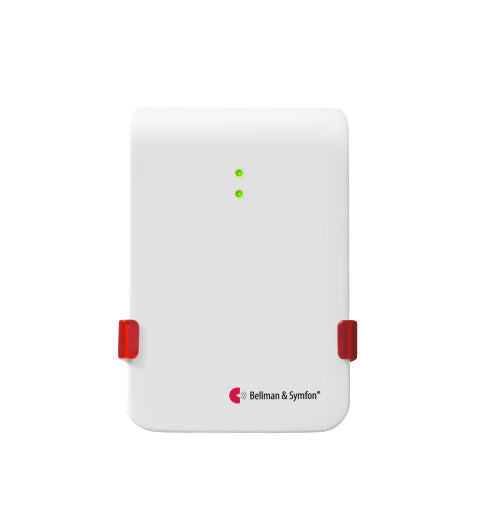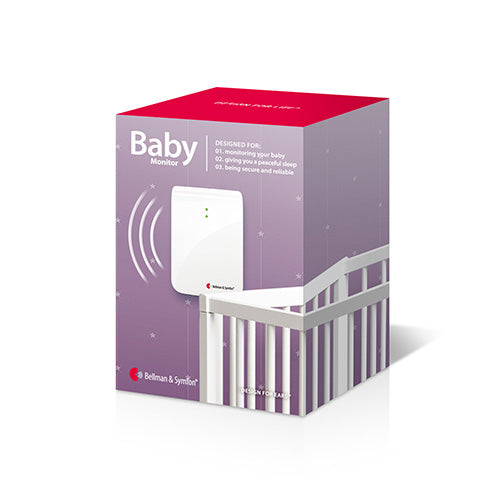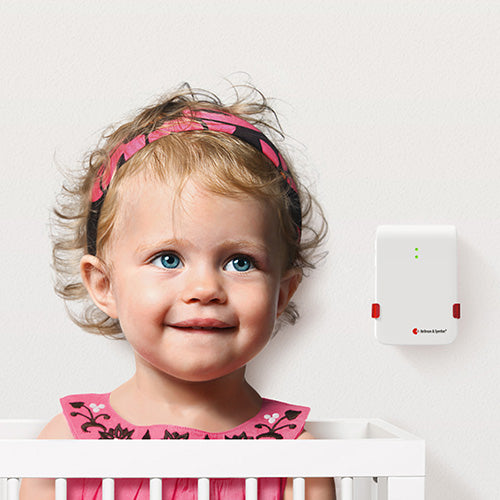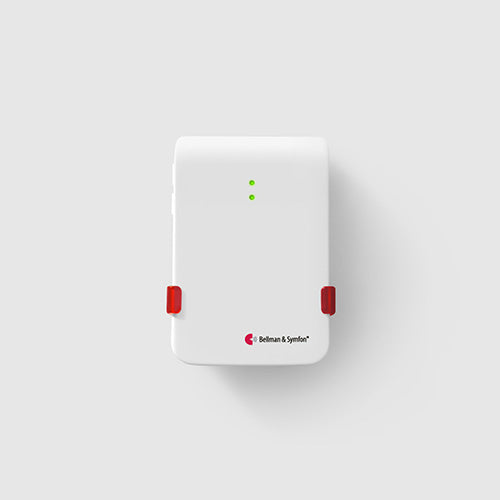






Description
Bellman & Symfon Visit Baby Cry Transmitter
The Bellman Symfon Visit Baby Cry Transmitter (BE1491) is a secure, wireless baby monitor designed especially for parents who are deaf, hard of hearing or heavy sleepers. Placed upright near the cot, it listens for crying and, once the sound level and duration match your chosen sensitivity and delay settings, it sends a Visit radio signal to your Bellman receivers so you are alerted by vibration, sound or bright flashing lights anywhere in the home.
Battery powered and compatible with all Bellman Visit receivers, it offers flexible, reliable baby monitoring without relying on Wi‑Fi or smartphones, giving peace of mind that you will know as soon as your baby needs you, day or night.
Bellman BE1491 Visit Baby Cry Transmitter
- Adjustable sensitivity and delay to match your baby, room acoustics and household noise, helping reduce false alarms while still catching real crying episodes quickly.
- Wireless integration with all Bellman Visit receivers gives flexible alerts, vibration, sound or flashing light, tailored for parents who are deaf, hard of hearing or heavy sleepers.
- Battery-powered, secure baby monitoring solution that works day and night and does not require Wi‑Fi, phones or complex setup, ideal for accessible home and care environments.
Specifications
Shipping & Delivery
We offer free standard shipping Australia-wide on all qualifying orders.
Once your order is packed, you’ll receive an email notification with tracking details (where available).
For express or faster delivery options, or for more details on delivery times and regional constraints, check out our full Shipping & Delivery Policy or contact us.
NDIS Registered Provider
Fast Shipping
Installation Support Available
12–24 Month Warranties
Expert Support
30 Day Returns
Frequently Asked Questions
What Our Customers Are Saying
Real feedback from verified buyers
Bárbara P
Very easy to navigate on the website, I found what I wanted, and after a few days the device arrived and it was exactly what I needed.
There is a wide range of products available and I am very satisfied with the quality of the product.
Fast shipping, reliable products, great customer service, I had a few doubts about the device that I bought for my parents and I had the total customer support.
Stoo B
As someone that spent probably too much time in clubs in my younger days, my hearing is especially important given the minor issues I'm already experiencing. Hearforless had me covered. Great fast advice, and a great product which has served me well ever since when I've needed (or wanted) to be in noisy environments and look after my hearing. End result is that I can still enjoy things like concerts and hear great sound, without over-taxing already damaged ears.
Grainne Ni C
I use Hear for Less for work from time to time, staff are so knowledgeable and so helpful. They would climb a mountain for you. Would recommend to anyone for professional or private business. Customer service is great, communication is awesome, pricing is in line with competitors, delivery is seamless, items arrive at clients doors quickly, a lot of happy customers! Thanks team for the great work 👍
Anna van T
Unbelievable service, ordered hearing aid batteries at 9:00 in the morning & they were delivered in under an hour to my door. During times of lockdown & COVID that was totally unexpected & much appreciated. They were also much cheaper than what I usually pay. Highly recommend them for outstanding customer service
We’ve supported thousands of Australians with hearing solutions that work, backed by real support, fast shipping, and official NDIS registration. From city centres to remote towns, we're here to help you stay connected, wherever you are.

 Hearing Aid Accessories
Hearing Aid Accessories
 Assistive Listening Devices
Assistive Listening Devices
 Home and Alerts
Home and Alerts
 Laptops, Tablets & Software
Laptops, Tablets & Software
 Amplified Phones
Amplified Phones














